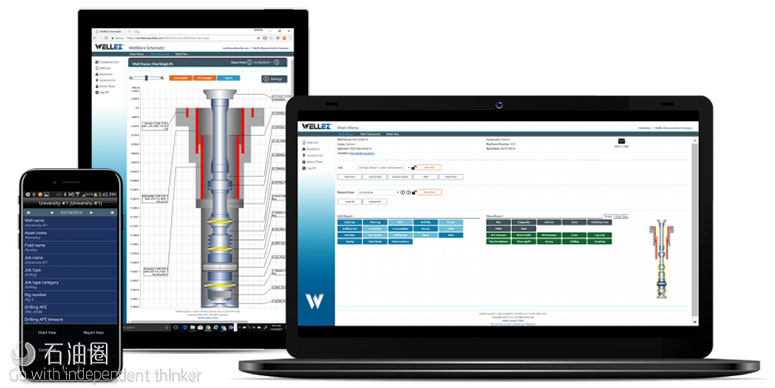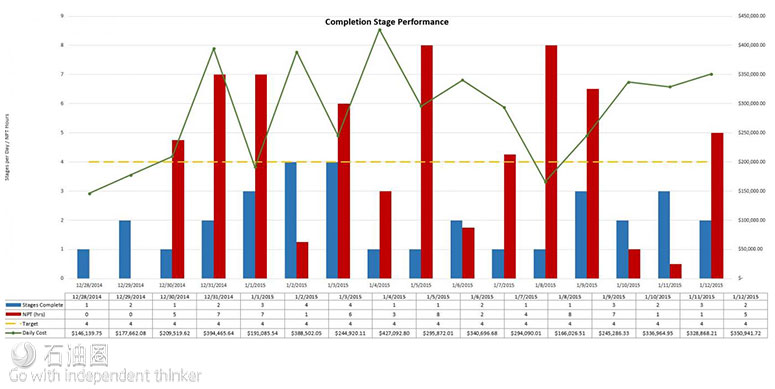Well Life-cycle Reporting In The Digital Age
Quorum’s WellEz software connects individuals regardless of their location using any modern device, including smartphones, tablets and PCs. (Source: Quorum Software)
The process of drilling and completing wells is expensive. It requires E&P operators to have access to accurate and timely field data to make informed operational decisions.
To stay ahead of lower-for-longer prices and rebounding service company day rates, operators need to gather more data in the field now more than ever. The ability to capture accurate data, uncover trends and optimize operational processes helps operators succeed in any market condition. Yet, operations teams often struggle with managing multiple spreadsheets or using complex legacy software solutions for data management.
Specifically during the completion phase of a well, E&P operators receive large datasets from multiple vendors onsite. These data often are left in silos in various PDFs, spreadsheets and email inboxes. By implementing an easy-to-use, cloud-based solution to capture, manage and report these data, operators are uncovering more ways to unlock value from their assets.
For example, Felix Energy searched for a solution to reduce time spent manually combining and distributing data from onsite vendors to office personnel. In 2014 the company began using Quorum Software’s well data management system, WellEz, for operations in the Permian Basin.
“This transmission of all well data to the office via the cloud saves us countless emails from the field staff and an abundance of confusion,” said Dan Graeve, completions engineer at Felix Energy. In addition, the ability to receive timely updates on the stages fractured per day, water usage and stage performance has enabled the company to set and achieve performance goals.
Efficient communications
Operators in unconventional shale plays are drilling and completing wells faster than ever. To do so, they need real-time access to operational data. “The ability to access KPIs [key performance indicators] from any computer or device with a couple of clicks has all the data I need to run my crew right at my fingertips,” Graeve said.
Cloud-based applications like WellEz On Demand are designed for the modern energy workplace by supporting new and improved methods of collaboration. This includes connecting individuals regardless of their location by using any modern device, such as smartphones, tablets or even the Microsoft Surface Hub. The ability to leverage these powerful tools means that access to operational data, and the potential to make informed decisions from those data, is possible wherever and whenever it is needed.
For example, during traditional fracturing operations, the onsite vendor or completion crew member collects stage information in large spreadsheets or word-processing documents and manually emails those updates to the office at specific intervals. This time-consuming process is inconsistent and prone to human error.
With WellEz, the data are collected from all parties with an easy-to-use application, which then can be accessed immediately by engineering team members. Reports also can be scheduled to automatically be sent at specified time intervals. This provides a complete and accurate dataset for the current completion job and allows the operator to analyze performance across wells, assets and teams.
The WellEz system helps operators make timely decisions by distributing single or multiwell analysis reports that track completion performance and nonproductive time (NPT). (Source: Quorum Software)
Boosting performance, reducing costs
In addition to gathering daily operations and fracture information, WellEz also includes an effective field cost tracking system. This allows operators to capture field cost estimates against the authority for expenditure, generate accurate accrual reports before invoices are received and compare financial performance for similar projects. By providing an easy-to-use system to capture field invoices, operators have reported a reduction in field costs estimates versus actual costs to as little as 5%.
Customers can track and report key completion information such as perforation depths, stage summaries, water usage and flowback readings. By taking the historical reporting information that might have sat unused in filing cabinets or inboxes and storing it in a reporting database, companies are able to have immediate insights into their operations.
Felix Energy use to spend hours in legacy software systems building post-job performance reports to optimize their operations; however, with a cloud-based system that can be configured to fit a specific workflow, this could be done quickly and to their specifications. “The customizable reports allow post-job analysis on each well to take a matter of minutes compared to hours with our previous software,” Graeve said.
Easy implementation
Many operators find that the Quorum system solves the limitations, user difficulties and support issues that are experienced from traditional reporting practices or legacy software programs. With a software- as-a-service (SaaS) delivery model, the reporting system bases its charges on field activity. This allows operators to pay for current reporting needs and hedge the risk of unexpected operational inactivity. In addition, the SaaS method of information delivery means no additional cost to the operator’s IT infrastructure.
The system can be implemented in as little as five days, and personnel can be trained to use the system in a 20-minute online training session. Through cloudbased technology, the system can help operators capture accurate data, provide robust reports to support decision-making and ultimately optimize operations to improve their bottom line.

 石油圈
石油圈

